Imperial Bathrooms Reviews
Buyers' Guide to Baths
How to choose your bath
Initially, decide what size bath you'd like (which will be dictated by your available space) and what your budget will be. Then consider who will be using the bath: does your bathroom have to serve the varied needs of a family, adults only, or older people who perhaps have mobility restrictions? Do you need a shower over the bath or are you planning a separate cubicle for that? Be clear about the bath's purpose and choose one which will suit your requirements.
Style choices for baths come down to the look you'd like and your personal taste - would you prefer a crisp clean modern look, a traditional vibe to fit with an older property, or a blend of both? Manufacturers offer plenty of design ranges these days, so once you've worked out what type of bath you need, follow your instincts on style.
Bath Types
Single Ended Baths
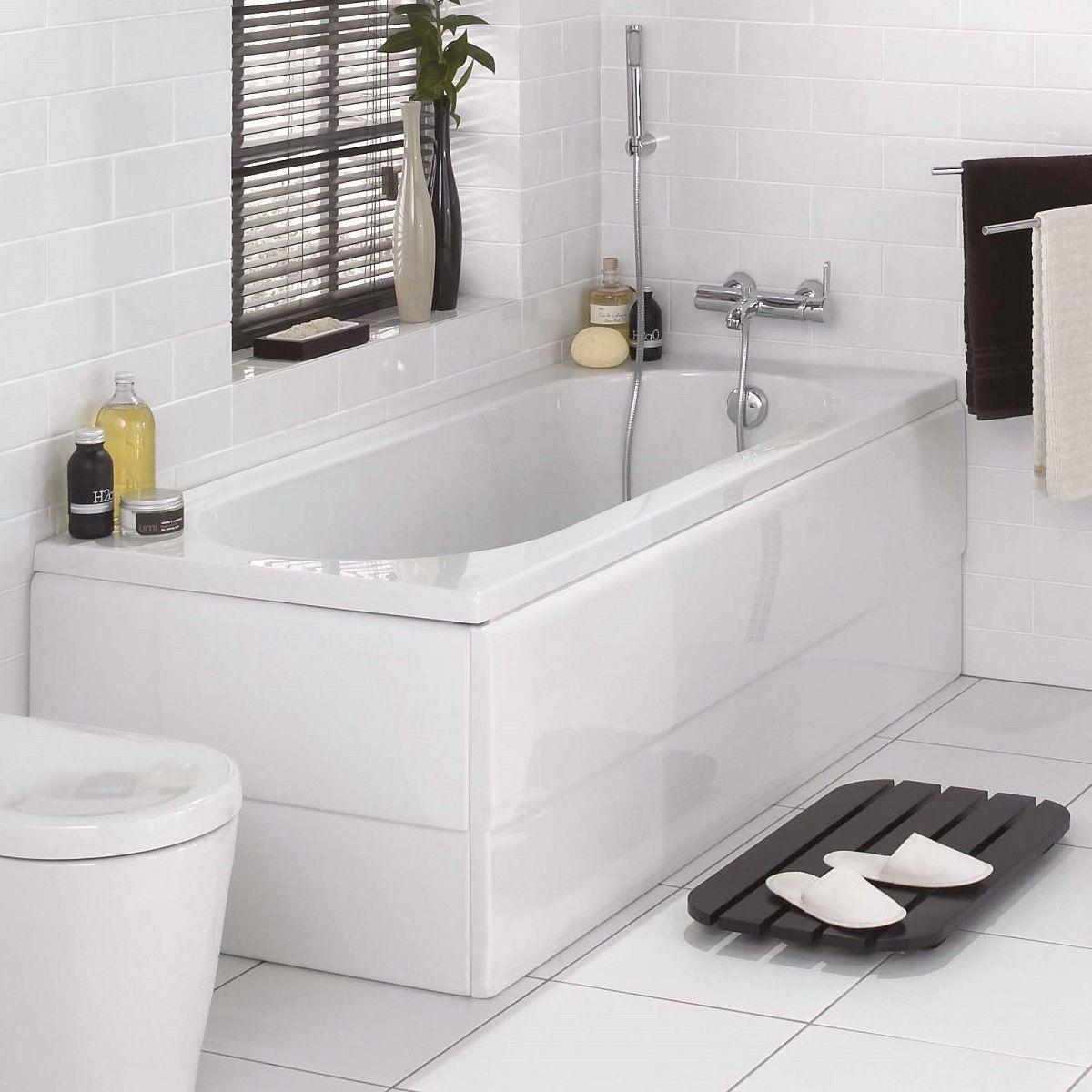
This is the most commonly used bath in British homes, as the plumbing is all at one deeper end and this allows for an optional shower to be installed over that end. The opposite end is usually gently sloped for a comfortable bathing position.
Two walls are required to fit a single ended bath, one at least 180cm in length.
See our single ended baths page for product options.
Double Ended Baths
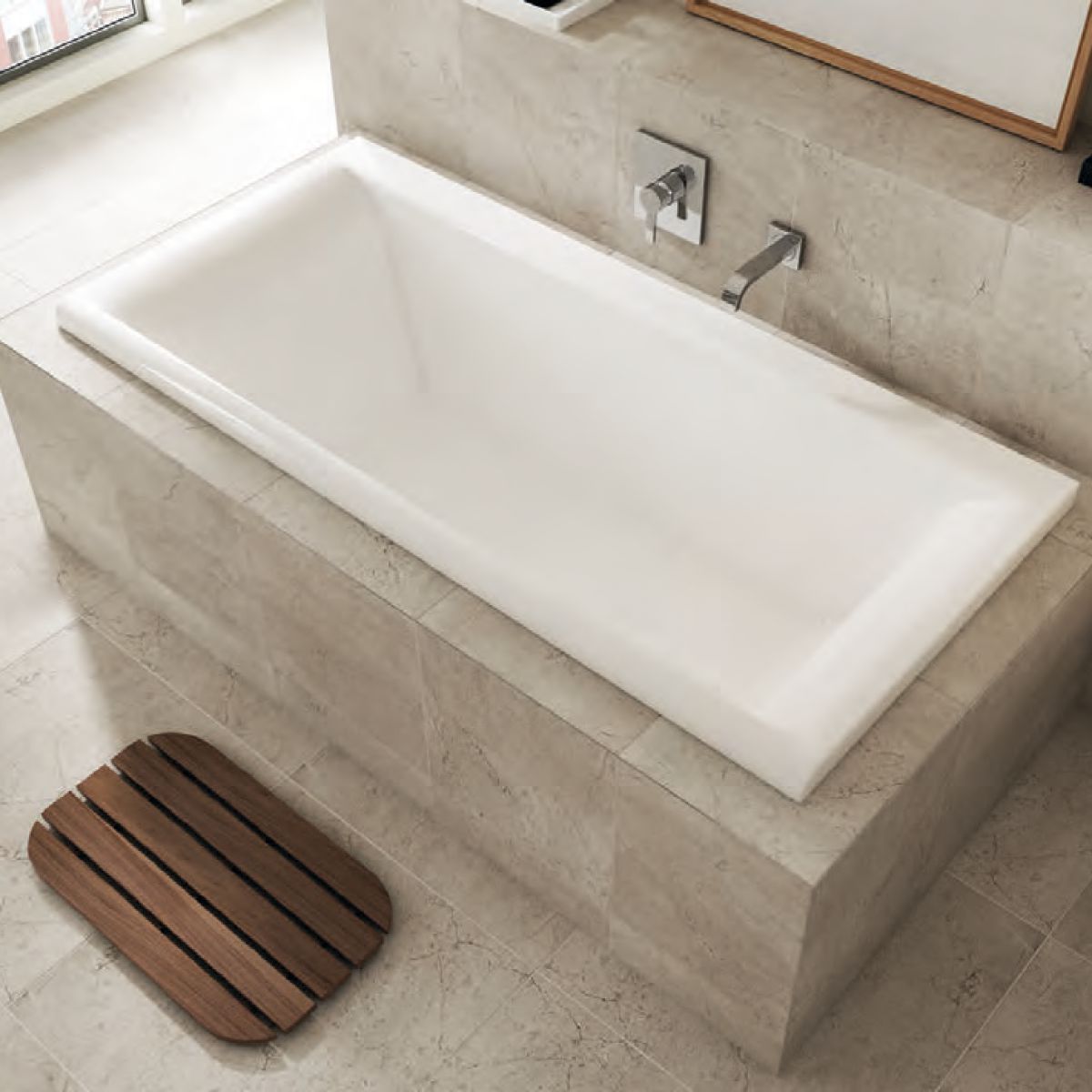
You may wonder if all baths don't have two ends, but what this refers to is a tub which has its taps and waste in the middle. So both ends are free of brassware, giving a much more comfortable bathing experience for one - or more - people. It is a good choice for a both family bath (for children) or a luxury adults-only bathroom.
Sometimes double ended baths are slightly wider than standard single ended models, so measure carefully. If you are intending a new install in place of an older bath, the plumbing will need some alteration.
See our double ended baths page for product options.
Freestanding Baths
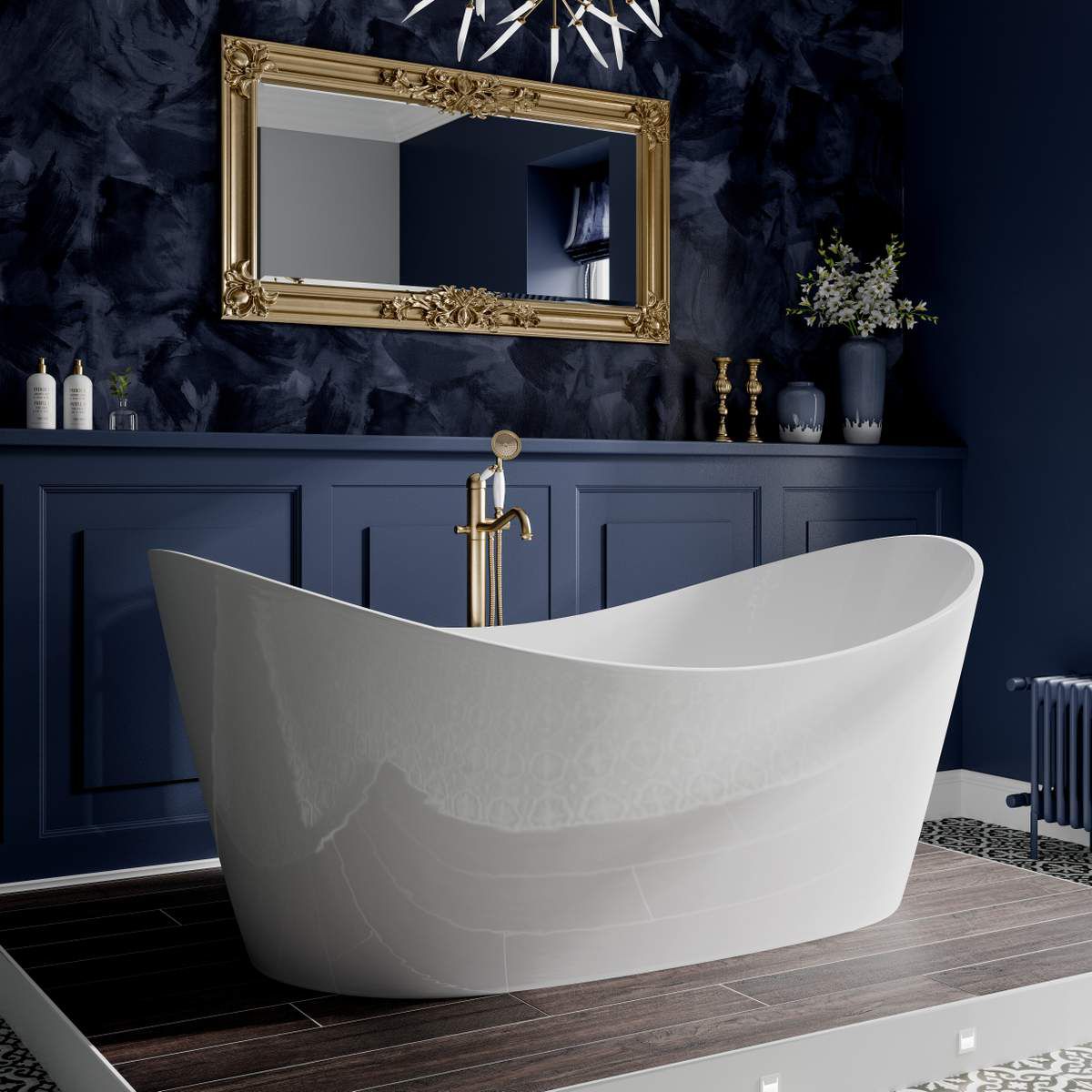
If the space is available, a freestanding bath really adds the wow factor to a bathroom. They look stunning and provide an amazing bathing experience.
Think hard about the size of your room, as ideally there should be sufficient area to walk freely around the bathtub on two or more sides at least. Provision for the taps and plug holes may have to be made in a new position - perhaps in the middle of the floor - to re-site a freestanding bath. There may not be any ledge area on the lip of the bath, so less room for bottles of shampoo and toiletries.
See our freestanding baths page for product options.
Shower Baths

If you don't have room for a seperate bath and shower, this is a popular choice. A shower is positioned over the bath, and often that end has some extra width by way of a curved or square shape. The curved ones tend to be called P shaped, and the square type are L shaped. These allow a more comfortable shower area whilst still providing for a relaxing bath.
You'll need to work out that your planned bathroom has space for the protuberance of the P or L shaped shower bath, and whether you require a left or right hand sided model. A practical tip is to sketch your intended bathroom layout from above, from which the orientation of each piece will be easily remembered.
See our shower baths page for product options.
Corner Baths
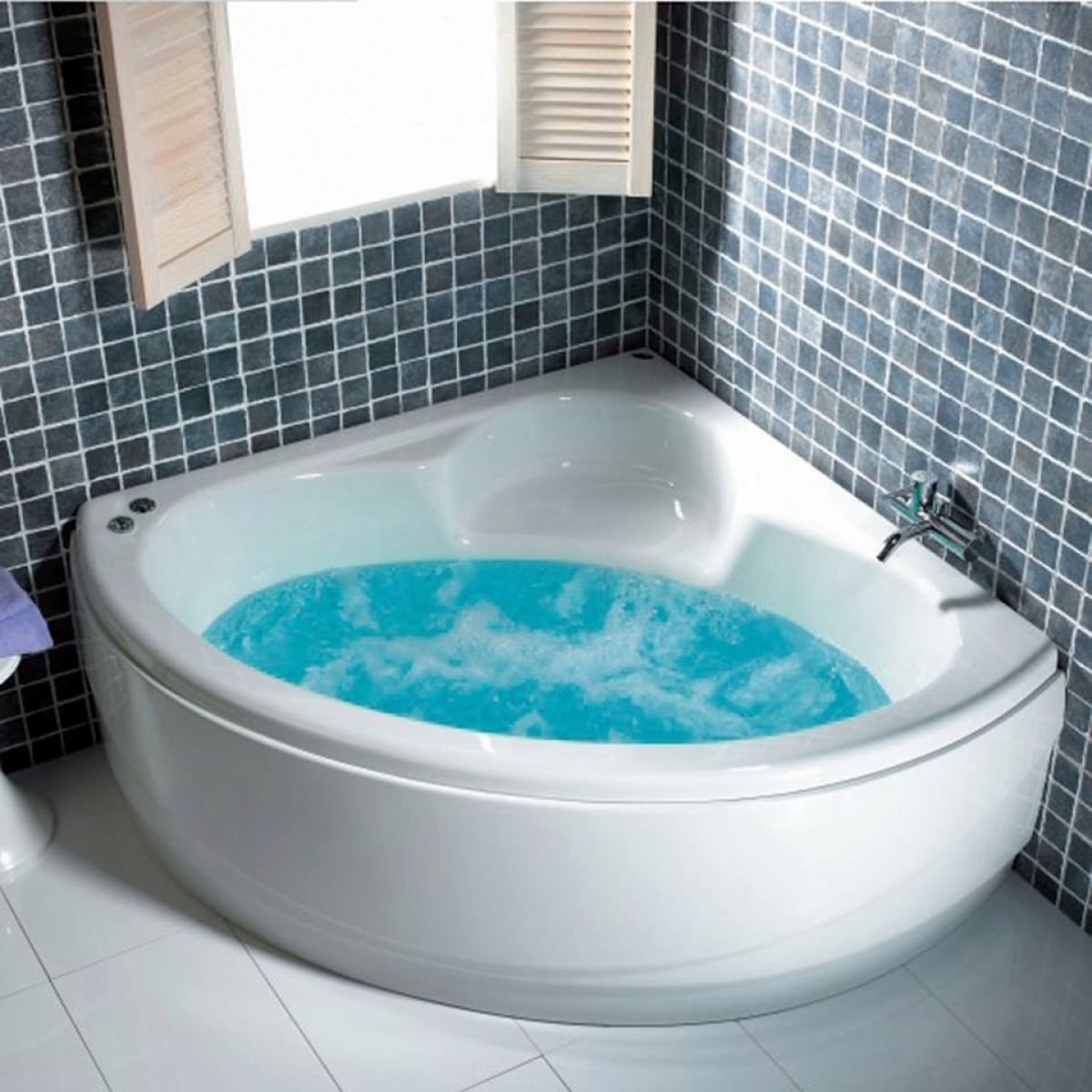
A corner bath can be a very handy space-saving solution for a smaller room, or a larger than average opulent focus feature when space isn't an issue. The luxury end of the market includes models with whirlpool jet options and built in moulded seats for a spa at home feature. For further practicality, many corner baths can have a shower mounted over too.
A corner bath can fit into a room without enough wall length to accommodate a longer straight bath. However, they tend to be deeper and sometimes wider than a conventional straight bath, so can use more hot water to fill; check that your system can cope with this additional demand.
See our corner baths page for product options.
Steel Baths
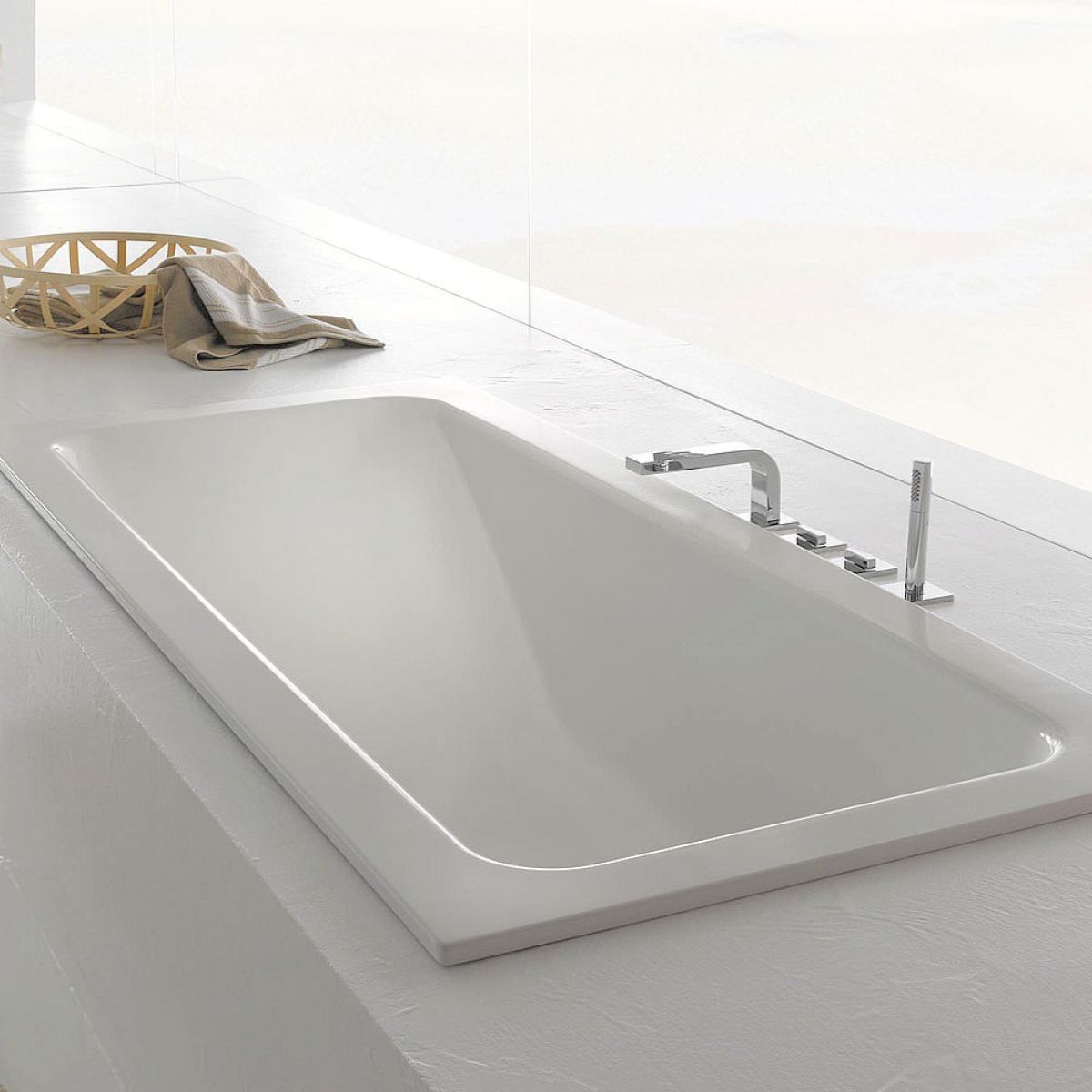
Good quality steel baths are very durable and will look just as good in twenty years as when new; they are resistant to warping, fading, chipping and scratching. The steel is coated in an enamel surface which gives a superior finish. They can be a good option in between an acrylic or cast iron bath, having some of the benefits of both.
Whilst steel conducts and retains the heat of bathwater very well, the sides and edges of the bath remain cool to the touch which can be off putting for some. These days, advanced steel forming techniques mean that steel baths are available in many shapes, and even as freestanding models.
See our steel baths page for product options.
Whirlpool Baths

Anyone in need of deep relaxation may want to consider a bath with a whirlpool jet system. The warm jets of water massage the muscles and offer a greater level of enjoyment and stress alleviation. Modern pumps are much quieter than older types and overall more affordable, so the jacuzzi experience can be easily enjoyed at home.
Generally, whirlpool systems can be added as an option to just about any acrylic bath - in various configurations such as P and L shaped baths, double or single ended, corner, inset and straight baths - but not to freestanding baths.
See our whirlpool baths page for product options.
Frequently Asked Questions
What's the standard thickness of a bath?
The standard thickness of a bath is 5mm.
How long and wide is the average bath?
Most baths are 1700mm in length and 760mm wide.
What is a back to wall bath?
With the stylish looks of a freestanding bath, a back to wall bath is usually a double ended bath placed with one long side against a wall. Perfect for a touch of eye-catching chic when space doesn't allow for a freestanding bath.
Do corner baths save space?
More compact corner bath models certainly do save both wall and floor space, and can add a quirky design touch to a bathroom. Space saver bath tubs are tapered in at the plug hole end - to allow a full bathing experience whilst cutting down on size.
Can you put a freestanding bath in a small bathroom?
Yes you can. Look at models especially designed for a small room, such as slipper baths and single ended freestanding baths.
Which is better acrylic or porcelain?
Porcelain is usually coated in enamel; so it is a very strong long lasting material which is resistant to warping or scratching, and looks beautiful. However, baths made from porcelain are incredibly heavy and lose their heat fairly quickly. Acrylic is usually a much more cost effective versatile material which is warm to the touch.
Shop Baths
Source: https://www.ukbathrooms.com/baths/

0 Komentar